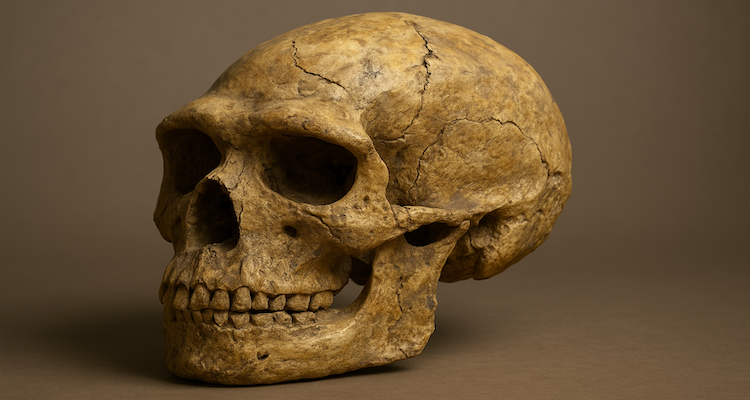Ancient Skull Discovery May Rewrite Human Evolution Timeline
A 1-million-year-old skull unearthed in China reveals a lost human lineage tied to Denisovans, reshaping the story of human evolution.
Introduction: A Skull That Could Change Human History
When workers in China’s Hubei Province uncovered a distorted fossilized skull in 1990, its importance was nearly lost beneath the crushing weight of time. Now, after decades of study and advanced digital reconstruction, scientists believe this ancient cranium known as Yunxian 2 represents one of the earliest members of a mysterious branch of humanity. The finding could redefine how we understand the evolution of our species and its cousins over the past million years.
Context & Background: Uncovering a Human Puzzle
The Yunxian 2 skull, dated between 940,000 and 1.1 million years old, sat in scientific limbo for decades. Initially, it was tentatively assigned to Homo erectus, an ancestor known for upright posture but smaller brain size compared to modern humans. Yet new research published in Science challenges that assumption, suggesting the skull belongs to a separate lineage tied to the elusive Denisovans distant cousins of both Neanderthals and Homo sapiens.
This revelation places the fossil within an Asian-centered evolutionary group that also includes Homo longi, sometimes called the “Dragon Man,” discovered in northeast China.
Main Developments: Redrawing the Family Tree
Using cutting-edge 3D scans and comparative analysis with more than 100 other fossils, researchers reconstructed the skull’s original form. The results were striking.
-
The skull likely belonged to a male, aged 30–40.
-
Its features include a long, low cranium, a strong brow ridge, and a large projecting nose.
-
With an unusually large brain volume for its age, the fossil challenges long-standing assumptions about early human brain development.
-
Unlike Neanderthals, its facial structure lacked a prominent midface, instead showing flat cheekbones that project forward.
Paleoanthropologist Xijun Ni, who led the study, explained that the fossil shares critical traits with Denisovans and Homo longi, such as a broad palate and distinctive cranial features.
Expert Insight: Voices from the Field
Chris Stringer, an anthropologist at London’s Natural History Museum and co-author of the study, emphasized the fossil’s significance.
“This skull bridges a crucial gap. Its size and shape set it apart from Homo erectus, while pointing to a lineage closely tied to both Denisovans and modern humans.”
Stringer also suggested that Yunxian 2 may help solve the so-called “Muddle in the Middle” the puzzling mix of human fossils dated between 300,000 and one million years ago that have long confused scientists.
Impact & Implications: Shifting the Evolutionary Timeline
The discovery forces researchers to rethink when and how different human branches diverged. According to the study, five major human clades may have split from each other more than a million years ago:
-
Homo sapiens (modern humans)
-
Homo longi/Denisovans (Asia-based)
-
Neanderthals (Homo neanderthalensis)
-
Homo heidelbergensis (first identified in Germany)
-
Homo erectus
This suggests our own lineage may have begun separating from its cousins hundreds of thousands of years earlier than once believed.
The Denisovans, first identified from a Siberian cave in 2010, left a lasting legacy despite their disappearance. Today, many people across Asia and Oceania still carry fragments of Denisovan DNA, evidence of ancient interbreeding with Homo sapiens.
A Window into Our Deep Past
The crushed skull of Yunxian 2, once nearly overlooked, has become a critical piece in the human story. By illuminating an ancient branch of our evolutionary family, it reveals that human history is more complex and more interconnected than we imagined.
As Ni put it, this discovery doesn’t just add another fossil to the record. It challenges the very timeline of when modern humans began to emerge. For researchers, it offers a rare window into the processes that shaped humanity a million years ago. For the rest of us, it’s a reminder that the path to who we are today was far from straightforward.
ALSO READ: White Dwarf Devours Pluto-Like World, Offering Clues to Life Beyond Earth











